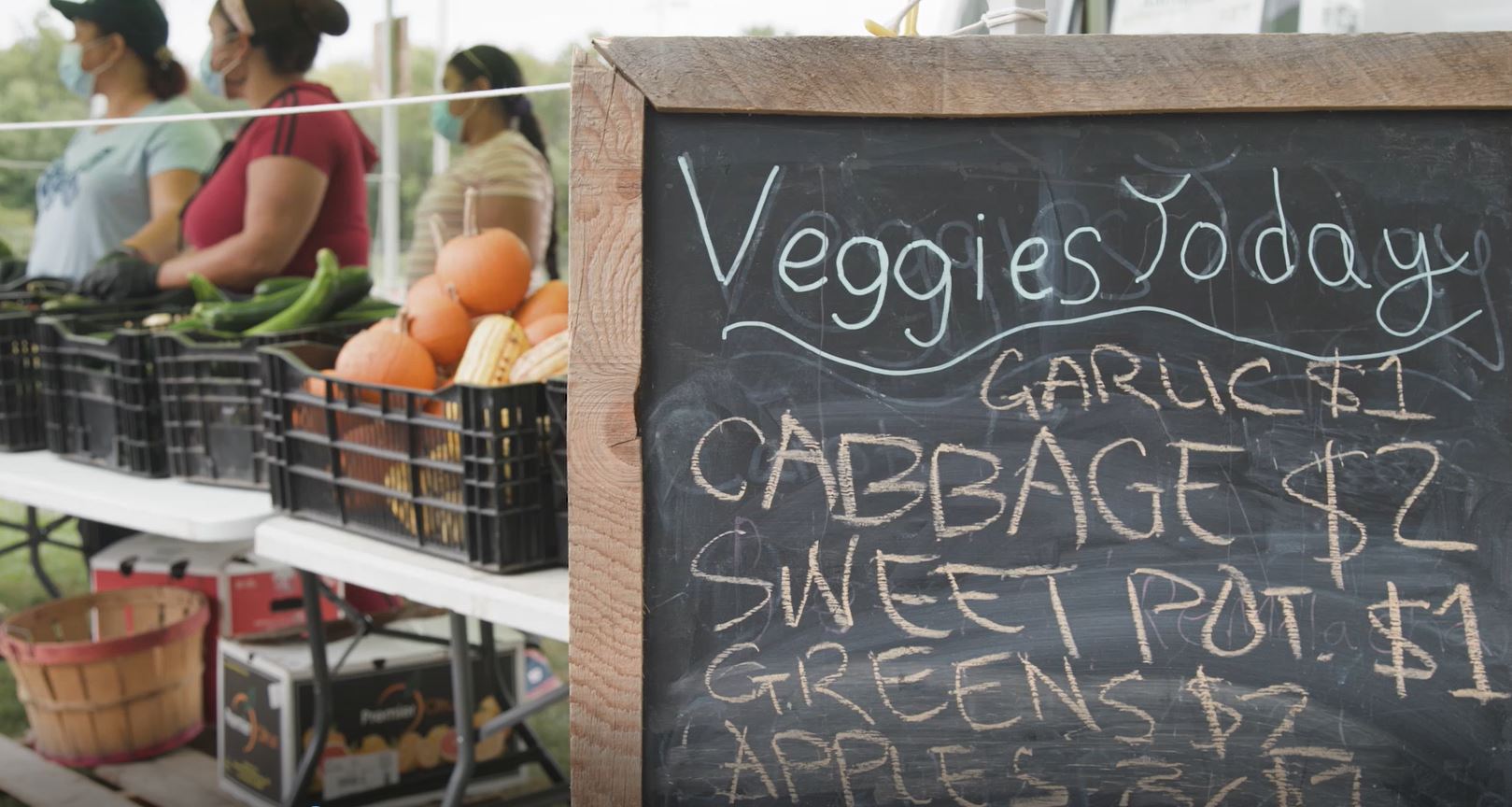As summer approaches, several nonprofits are cleaning out their vans, mapping out routes, and coordinating with farmers for the start of their mobile markets. It is exactly what you’d imagine — a small farmers market packed up in a van and driven around to communities.
Caitlin Marquis, of the nonprofit Healthy Hampshire, which is supporting the new Amherst Mobile Market, shared why going mobile with local produce is so important.
“If we look at the data about why people are struggling to access healthy food in Hampshire County, the issues include transportation, so bringing it to them is the best way to fix that challenge. There’s a cost issue too but we’re fixing that by design.”
The mobile market programs in Hampshire County were designed specifically to help people access healthy food — not just by making it physically accessible, but affordable too thanks to grant funding. These programs are community driven solutions to hunger — organizers have continued to engage people experiencing food insecurity in program development. They’re as much focused on community building and empowerment as they are food access.
Healthy Hampshire also had a hand in the creation of the Hilltown Mobile Market, run by the Hilltown Community Development Center.
That mobile market is in its third year serving Huntington, Cummington and Blandford with over 80 costreduced farm shares aggregated from local Hilltown farms like Sawyer Farm and Four Corners Farm in Worthington, and Hart Farm in Conway. Lincoln Fishman of Sawyer Farm shared, “In our rural area, it’s hard to reach a large enough consumer base to support direct sales, and it’s even harder to aggregate wholesale with other small, far-flung Hilltown farms. The Hilltown mobile market made it possible to do both.”
Grow Food Northampton pivoted its existing mobile market program to better serve Northampton residents during the pandemic. Executive Director Alisa Klein shared more: “Since the start of the pandemic, we’ve run the Community Food Distribution Project with the Northampton Survival Center as an emergency food delivery service.
GFN purchased local produce from 26 different farms and got it to folks experiencing food insecurity — 260,000 pounds to date, delivered as tens of thousands of food packages to over 2,100 unique individuals and over 820 unique families in Northampton. We’ve served as the Survival Center’s delivery arm in the pandemic and we were able to do this because we had the equipment from our mobile market.”
As we’re coming out of the pandemic, GFN is aware that Food Distribution Project participants need more choice in how they access their food. This month they’re reverting back to more of a pre-pandemic, weekly “Neighborhood Market” model. This will be set up like a mobile market so that participants can choose the produce and other farm foods that they want. There won’t be a charge for this local farm food, as there hasn’t been throughout the pandemic.
In Springfield, the Go Fresh Mobile Market is the oldest of the region’s mobile markets — going on 11 years. Wellspring Cooperative is the latest operator to take ownership of the market. Fred Rose, the co-director, shared that when the mobile market started it was focused on a mission of advancing public health, so they created a food access program that allowed low-income seniors to use food benefit programs for local produce.
The Go Fresh Mobile Market van drives around to 12-15 sites throughout the summer: a mix of senior centers, public housing, health clinics and hospitals, and a few community- based organizations. Last summer, like GFN, Go Fresh Mobile Market gave out produce boxes because of the surge in food insecurity brought about by the pandemic.
This year, customers can use SNAP and HIP or pay out of pocket for produce. Rose said that they prioritize buying from BIPOC-run farms and, like all the area mobile markets, aggregate produce from a variety of local farms. Their goal is to make the market year-round and offer greenhouse and storage crops for winter.
Mobile markets are a piece of the local food system and while not highly visible to the average consumer, they’re targeted to meet the needs of the specific communities they serve. Making food accessible and affordable requires tremendous coordination from a variety of community focused organizations because they are bridging complicated gaps — connecting local farmers to people who are hungry and might not otherwise have access to local fresh food.
To find a mobile market making its way toward you this summer, visit buylocalfood.org. All markets accept SNAP and HIP.
Here are details for specific programs:
■ Amherst Market, at four locations from now through Oct. 30. Visit amherstmobilemarket.com/
■ Hilltown Mobile Market, at four locations July 22-Oct. 8. Visit hilltownmobilemarket. info/
■ Grow Food Northampton. Deliveries Mondays, Wednesdays and Fridays. Visit growfoodnorthampton. org/food-distribution/
■ Go Fresh Mobile Market. Visit gofreshmobilemarket.org/
Alexis Breiteneicher is development director at CISA (Community Involved in Sustaining Agriculture).
To find a mobile market making its way toward you this summer, visit buylocalfood.org. All markets accept SNAP and HIP.

